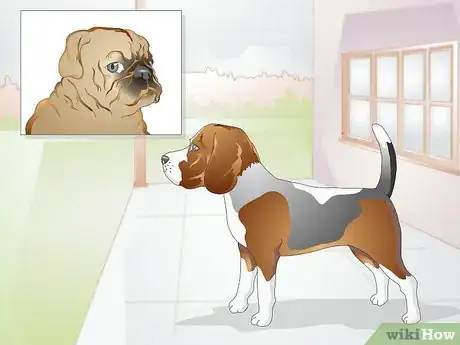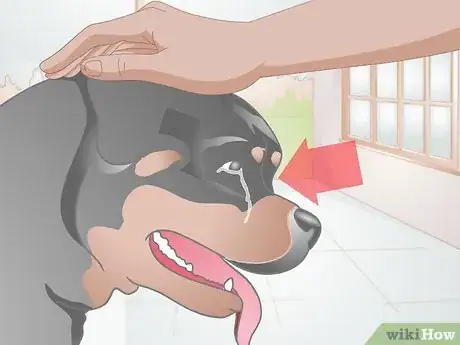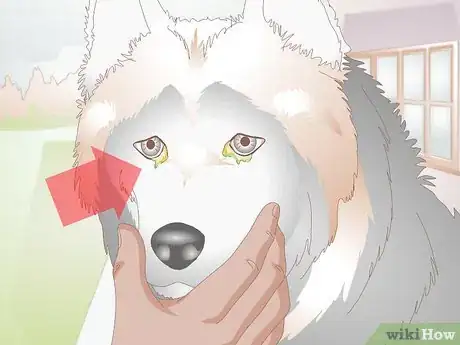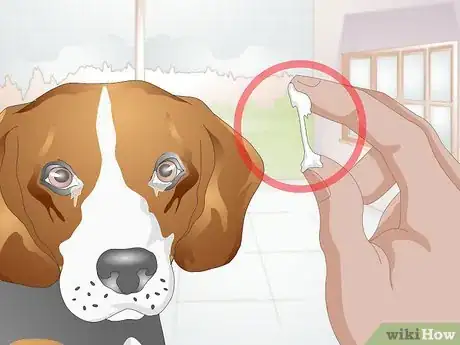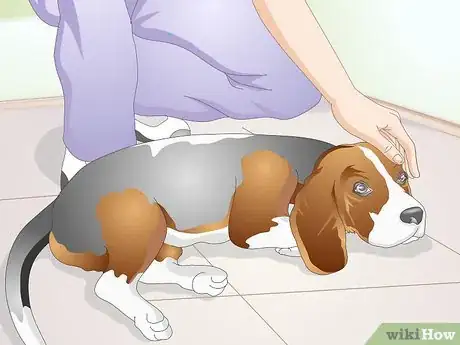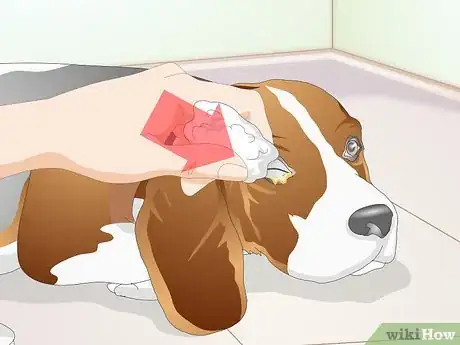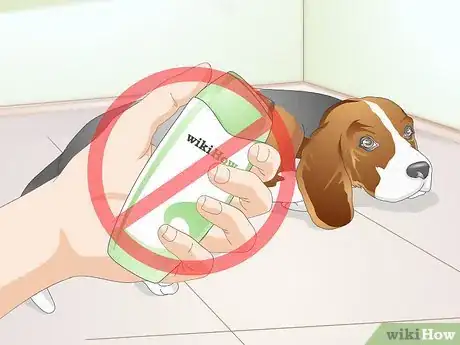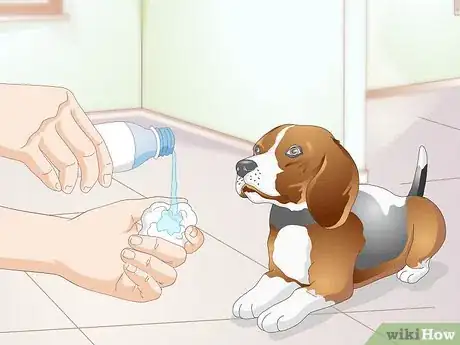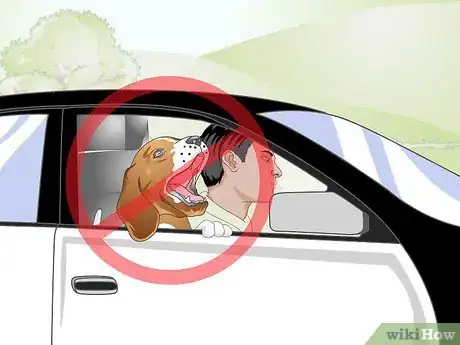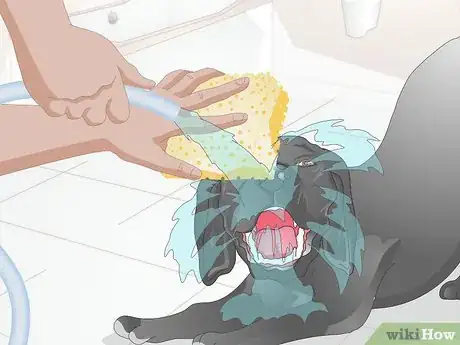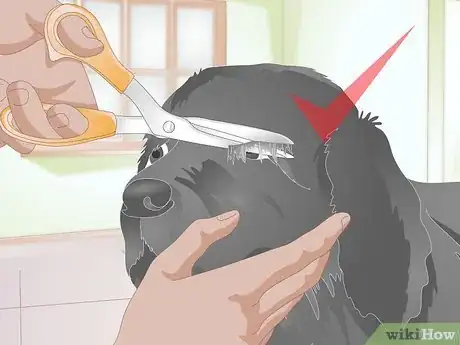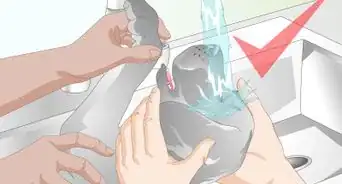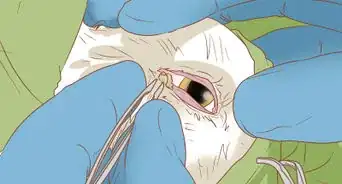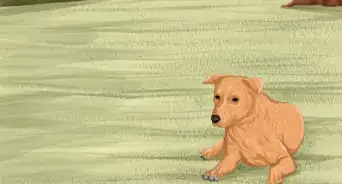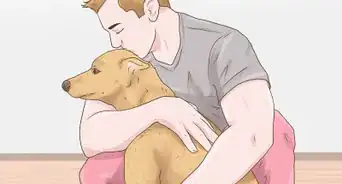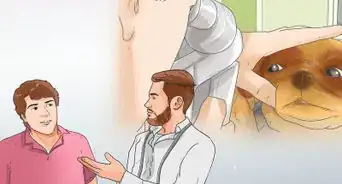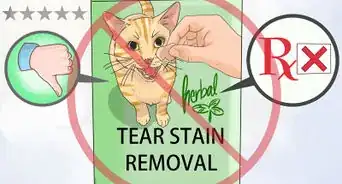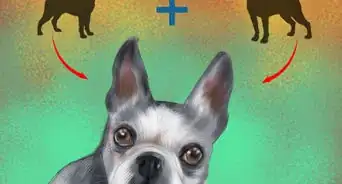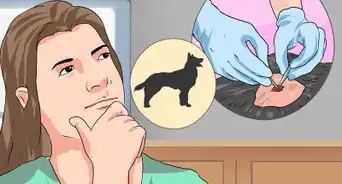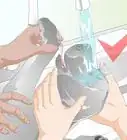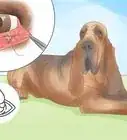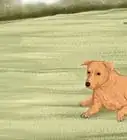This article was co-authored by Beverly Ulbrich. Beverly Ulbrich is a Dog Behaviorist and Trainer and the Founder of The Pooch Coach, a private dog training business based in the San Francisco Bay Area. She is a Certified CGC (Canine Good Citizen) Evaluator by the American Kennel Club and has served on the Board of Directors for the American Humane Association and Rocket Dog Rescue. She has been voted the best private dog trainer in the San Francisco Bay Area 4 times by SF Chronicle and by Bay Woof, and she has won 4 "Top Dog Blog" awards. She has also been featured on TV as a dog behavior expert. Beverly has over 18 years of dog behavior training experience and specializes in dog aggression and anxiety training. She has a Master of Business Administration from Santa Clara University and a BS from Rutgers University.
There are 10 references cited in this article, which can be found at the bottom of the page.
wikiHow marks an article as reader-approved once it receives enough positive feedback. In this case, 89% of readers who voted found the article helpful, earning it our reader-approved status.
This article has been viewed 176,744 times.
Cleaning gunk from your dog’s eyes can be an important part of keeping your pooch safe and healthy. Before you begin removing discharge from your dog’s eyes, make sure you determine the cause of the discharge. Gunk in your dog’s eyes can signal a serious medical condition and warrant treatment from your veterinarian. Once you’ve figured out what’s causing the eye drainage, you can clean gunk from your dog’s eyes using a damp cloth or an eye wash formulated especially for dogs.
Steps
Determining the Cause of Your Dog’s Eye Discharge
-
1Visit your vet. If your dog has gunk or discharge draining from her eyes, you first need to make sure it’s not a sign of a serious health problem. Make an appointment with your veterinarian to determine the cause of the discharge before addressing the problem on your own. While you should evaluate your dog for symptoms, you should never rely on your own assessment of the problem.
- Take notes on your dog’s symptoms and bring them with you to the vet visit.
- If it appears something is lodged in your dog’s eye, visit the emergency vet immediately.
-
2Consider your dog’s breed. Brachycephalic breed breeds including pugs, bulldogs, boxers, and Pekingese are more likely to have eye discharge because of their flat faces, protruding eyes, and shallow eye sockets, and can suffer from issues with tear drainage and/or eyelids that don’t function properly. Saint Bernards, terriers, beagles, cocker spaniels, and bloodhounds have loose skin on their faces and, as a result, have eyelids that are more likely to roll outward. These breeds are also more susceptible to cherry eye, a condition where the gland in your dog’s eyelid slips out of its original position.[1]
- If your dog has a furry face or a beard, resist the temptation to clean it every day. This may actually cause infections.[2]
Advertisement -
3Figure out if your dog has epiphora. Excessive tearing, or epiphora, can result in stained, stinky, and/or infected fur and skin. If your pooch’s eyes are watery and teary, she could have epiphora. There are many conditions that cause epiphora, including allergies, ulcers on your dog’s cornea, inflammation, abnormal eyelashes, tumors, glaucoma, and poor drainage of the eye by the tear ducts.[3]
- If you think your dog is suffering from epiphora, take her/him to see the vet as soon as possible.
-
4Determine if your dog has conjunctivitis. If your dog has yellow or green pus, mucus, or watery discharge draining from her eyes, it could be a sign that she is suffering from conjunctivitis. Conjunctivitis is when the lining of your dog’s eye becomes inflamed. It can be caused by a number of factors including allergies, distemper, tumors, injury, birth defects, dry eye, tear duct problems or foreign matter.[4]
- If your dog is showing symptoms of conjunctivitis, take her to the vet immediately.
-
5Screen your dog for dry eye. If your dog’s eye discharge is sticky and persistent, dry eye could be the culprit. Mucus and inflammation are characteristics of dry eye in dogs. Dry eye can be caused by injury to the tear-producing gland, autoimmune response, or distemper. If your dog has dry eye, she is at serious risk for infection and/or ulcers on her cornea. If it looks like your dog is suffering from dry eye, make an appointment with her vet to get to the root of the issue and prevent future problems like infection.[5]
Cleaning Your Dog’s Eye with a Damp Cloth
-
1Keep your dog calm. While most dogs will be okay with you cleaning gunk from their eyes, others might not. If your dog is especially sensitive, try cleaning her eyes with the help of another person. Have someone with whom the dog is familiar hold your pet while you clean the dog’s eyes.
-
2Wet a clean washcloth or sponge. If your dog’s eye discharge isn’t caused by a serious medical condition like epiphora or conjunctivitis, you can clean the gunk with a damp, soft cloth or sponge. Using water that is at room temperature, wet the cloth and wring it out so it remains damp but is not overly saturated.[6]
- Avoid using extremely hot or cold water as this can cause further irritation in your dog’s eyes.
- Don’t use a napkin or paper towel as both can disintegrate when wet and leave harmful bits of paper in your pooch’s eyes.
-
3Remove the eye gunk with soft strokes. Using the moistened washcloth or sponge, gently clean the discharge from your dog’s eyes using several gentle strokes. If necessary, you can rinse and wring the cloth between strokes.
-
4Don’t use soap or shampoo. In the majority of cases, you should not use any type of detergent, soap, or shampoo when cleaning gunk from your dog’s eyes. This can cause irritation for your pet. Instead, you should stick to water and avoid cleansers altogether.[7]
-
5Clean your dog’s eyes with a sterile pet eye solution. If your pet is suffering from a chronic or serious condition that causes excessive eye discharge, your vet may recommend using sterile pet eyewash to clean your dog’s eye. Gently moisten the cotton ball or pad with the solution, taking caution to not soak it. Start at the inner corner of the eye and wipe outward.[8]
- Use a new cotton ball or pad for each eye, as using the same one for both eyes can spread bacteria, viruses, and infection between the two eyes.
Preventing Eye Problems
-
1Don’t let your dog hang her head out the window of your car. While it might seem like a whole lot of fun, allowing your dog to ride along with her head hanging out the window can be a recipe for disaster. The resulting wind can blow debris in your dog’s eyes, which can in turn cause irritation or even an infection.[9]
-
2Keep your pet’s eyes and face clean. The fur surrounding your dog’s eyes can be a hotbed for bacteria and viruses, which can quickly turn into an infection. Make sure you bathe your dog regularly and clean her eyes using either a damp cloth or a sterile pet eyewash.
-
3Trim the hair around your dog’s eyes. Keeping the hair around your dog’s eyes clipped can help prevent irritation and the proliferation of disease-causing bacteria and viruses. Have someone familiar with the dog hold her while you use blunt nosed scissors to trim the hair. If your dog is not comfortable with this, do not try it at home. Instead take her to your veterinarian for eye grooming.[10]
Expert Q&A
-
QuestionHow can I treat my dogs eye discharge at home?
 Beverly UlbrichBeverly Ulbrich is a Dog Behaviorist and Trainer and the Founder of The Pooch Coach, a private dog training business based in the San Francisco Bay Area. She is a Certified CGC (Canine Good Citizen) Evaluator by the American Kennel Club and has served on the Board of Directors for the American Humane Association and Rocket Dog Rescue. She has been voted the best private dog trainer in the San Francisco Bay Area 4 times by SF Chronicle and by Bay Woof, and she has won 4 "Top Dog Blog" awards. She has also been featured on TV as a dog behavior expert. Beverly has over 18 years of dog behavior training experience and specializes in dog aggression and anxiety training. She has a Master of Business Administration from Santa Clara University and a BS from Rutgers University.
Beverly UlbrichBeverly Ulbrich is a Dog Behaviorist and Trainer and the Founder of The Pooch Coach, a private dog training business based in the San Francisco Bay Area. She is a Certified CGC (Canine Good Citizen) Evaluator by the American Kennel Club and has served on the Board of Directors for the American Humane Association and Rocket Dog Rescue. She has been voted the best private dog trainer in the San Francisco Bay Area 4 times by SF Chronicle and by Bay Woof, and she has won 4 "Top Dog Blog" awards. She has also been featured on TV as a dog behavior expert. Beverly has over 18 years of dog behavior training experience and specializes in dog aggression and anxiety training. She has a Master of Business Administration from Santa Clara University and a BS from Rutgers University.
Dog Behaviorist & Trainer Clean it off with a warm washcloth. Using a warm washcloth can feel really good to your dog, especially if you've done it their whole life so they're used to the process.
Clean it off with a warm washcloth. Using a warm washcloth can feel really good to your dog, especially if you've done it their whole life so they're used to the process. -
QuestionHow often should you clean your dog's eyes?
 Beverly UlbrichBeverly Ulbrich is a Dog Behaviorist and Trainer and the Founder of The Pooch Coach, a private dog training business based in the San Francisco Bay Area. She is a Certified CGC (Canine Good Citizen) Evaluator by the American Kennel Club and has served on the Board of Directors for the American Humane Association and Rocket Dog Rescue. She has been voted the best private dog trainer in the San Francisco Bay Area 4 times by SF Chronicle and by Bay Woof, and she has won 4 "Top Dog Blog" awards. She has also been featured on TV as a dog behavior expert. Beverly has over 18 years of dog behavior training experience and specializes in dog aggression and anxiety training. She has a Master of Business Administration from Santa Clara University and a BS from Rutgers University.
Beverly UlbrichBeverly Ulbrich is a Dog Behaviorist and Trainer and the Founder of The Pooch Coach, a private dog training business based in the San Francisco Bay Area. She is a Certified CGC (Canine Good Citizen) Evaluator by the American Kennel Club and has served on the Board of Directors for the American Humane Association and Rocket Dog Rescue. She has been voted the best private dog trainer in the San Francisco Bay Area 4 times by SF Chronicle and by Bay Woof, and she has won 4 "Top Dog Blog" awards. She has also been featured on TV as a dog behavior expert. Beverly has over 18 years of dog behavior training experience and specializes in dog aggression and anxiety training. She has a Master of Business Administration from Santa Clara University and a BS from Rutgers University.
Dog Behaviorist & Trainer Consider cleaning your dog's eyes every day, like when you wake up in the morning or go to bed at night. It should only take a few minutes but can have a large impact on your dog's health.
Consider cleaning your dog's eyes every day, like when you wake up in the morning or go to bed at night. It should only take a few minutes but can have a large impact on your dog's health. -
QuestionIs it normal for an Australian Shepherd to have booger-like stuff near the eyes?
 Community AnswerYes. Many dogs have eye discharge that can form "boogers." If they smell strongly, start to form in the dog's eyes, or the dog seems to have tears running down its face, contact your vet.
Community AnswerYes. Many dogs have eye discharge that can form "boogers." If they smell strongly, start to form in the dog's eyes, or the dog seems to have tears running down its face, contact your vet.
References
- ↑ http://www.petmd.com/dog/conditions/eyes/c_dg_ectropion
- ↑ Beverly Ulbrich. Dog Behaviorist & Trainer. Expert Interview. 30 January 2020.
- ↑ http://www.vcahospitals.com/main/pet-health-information/article/animal-health/eye-discharge-or-epiphora-in-dogs/1010
- ↑ http://pets.webmd.com/dogs/conjunctivitis-dogs
- ↑ http://www.petmd.com/dog/conditions/eyes/c_dg_keratoconjunctivitis_sicca
- ↑ http://www.pedigree.com/all-things-dog/article-library/cleaning-your-dogs-face-and-eyes.aspx
- ↑ http://www.aspca.org/pet-care/dog-care/dog-grooming-tips
- ↑ https://www.petcarerx.com/article/how-to-clean-cocker-spaniel-eyes/523
- ↑ http://www.petmeds.org/petmeds-spotlight/don%E2%80%99t-let-your-dog-stick-his-head-out-the-car-window/
About This Article
To clean the gunk from your dog’s eyes, start by wetting a clean cloth or sponge with room-temperature water and wringing it out so it’s damp but not dripping. Then, use gentle strokes to wipe the gunk from your dog’s eyes, rinsing out the cloth between strokes if necessary. Additionally, make sure you use water rather than soap or shampoo, which can irritate your dog’s eyes. You should also take your dog to the vet’s, so they can check to make sure the discharge isn’t a sign of a serious health problem. For more information from our Veterinary reviewer, like how to figure out the possible cause of your dog’s eye discharge, read on!

